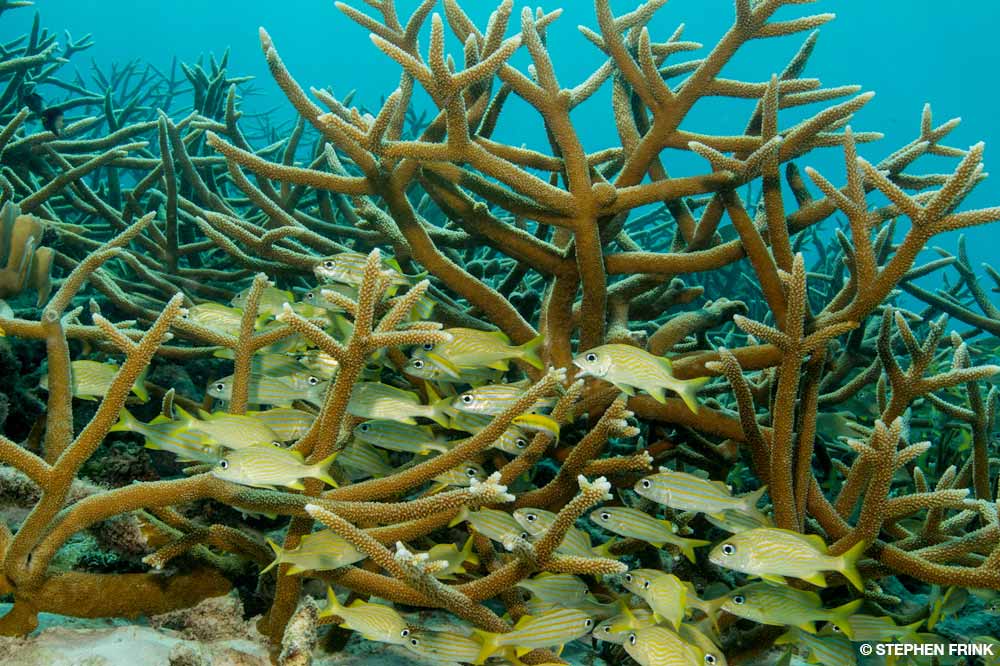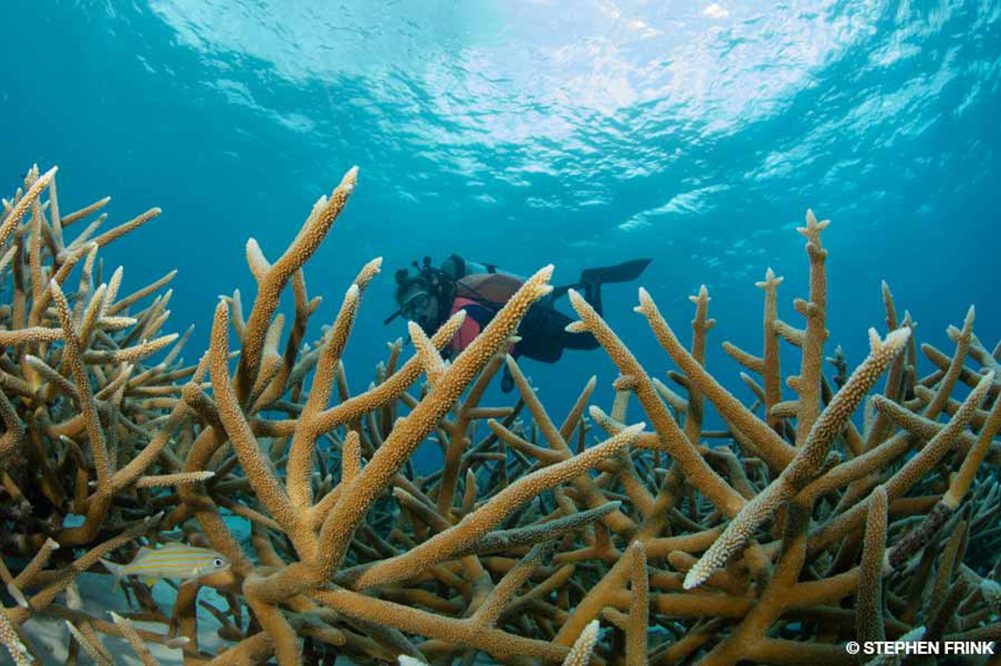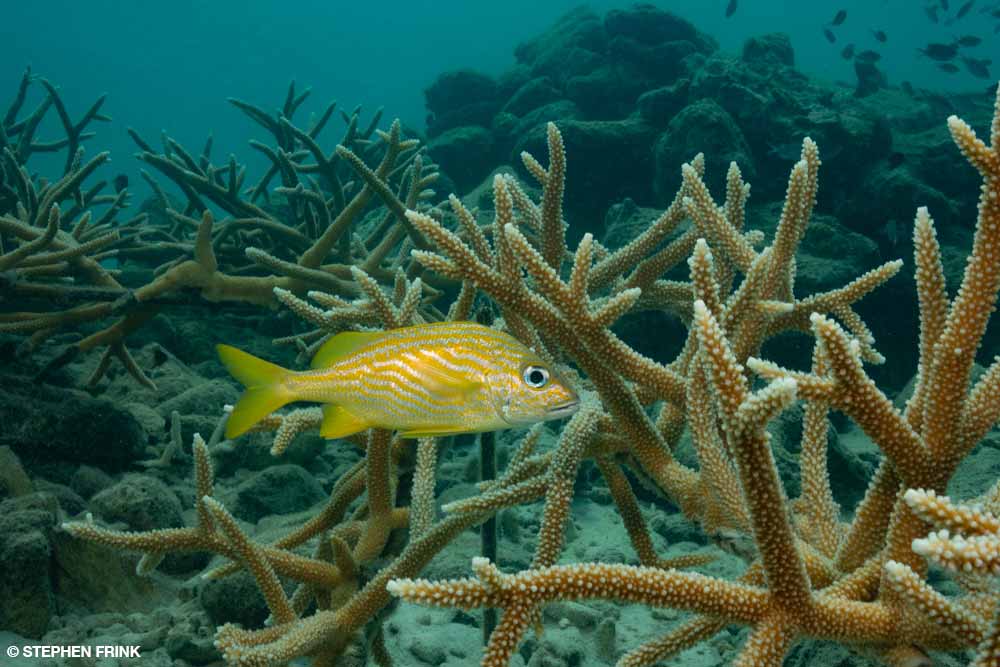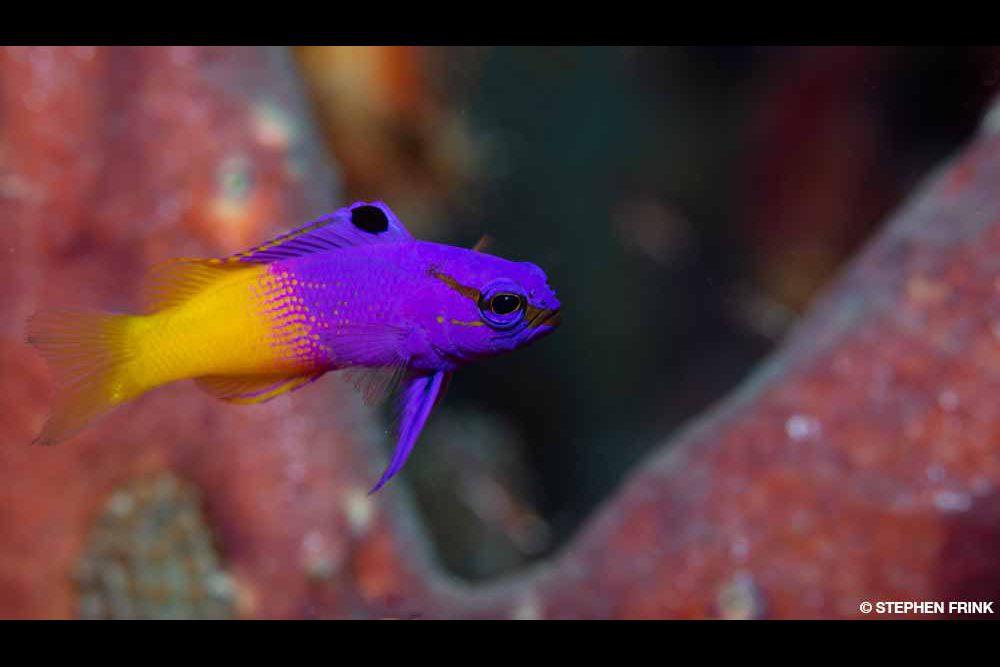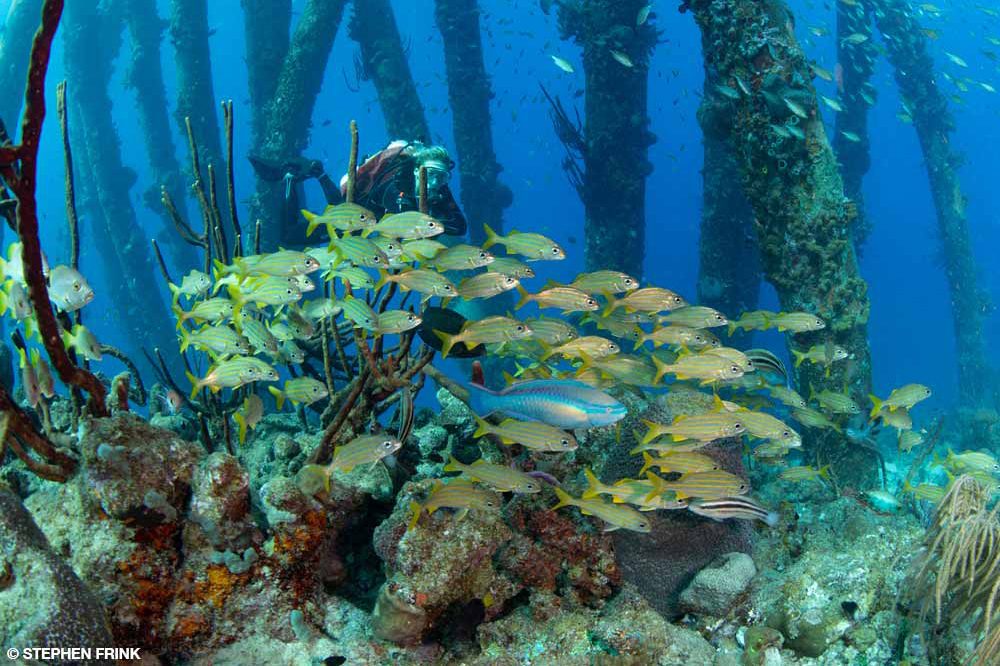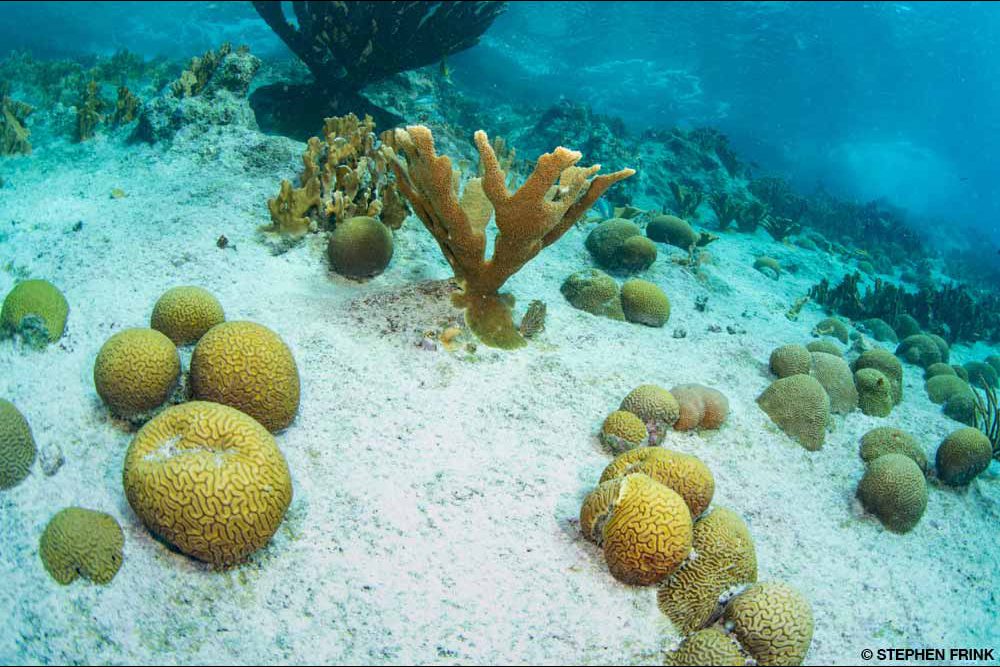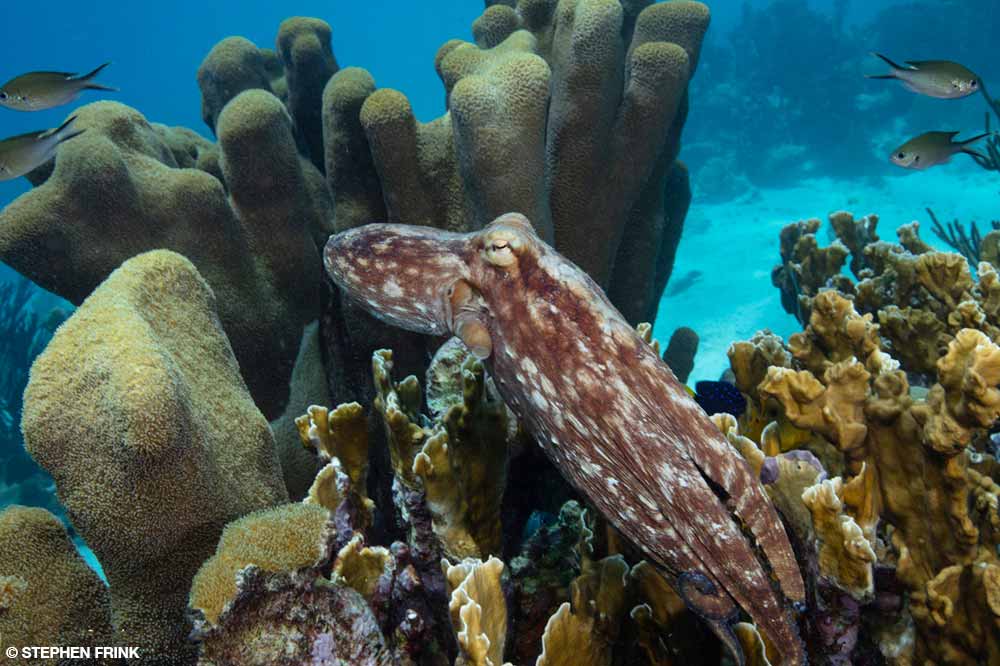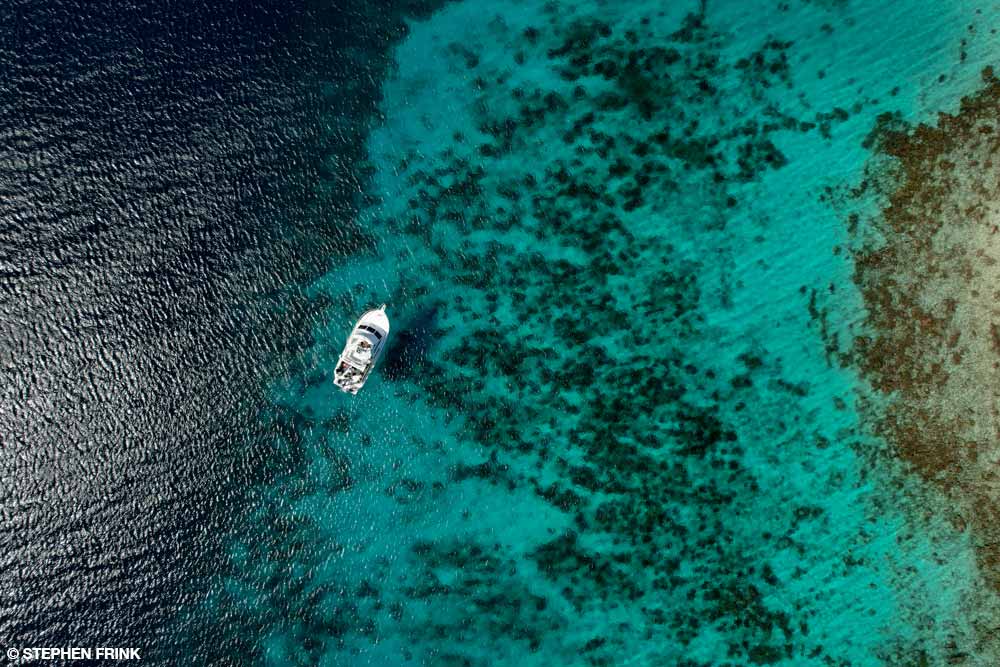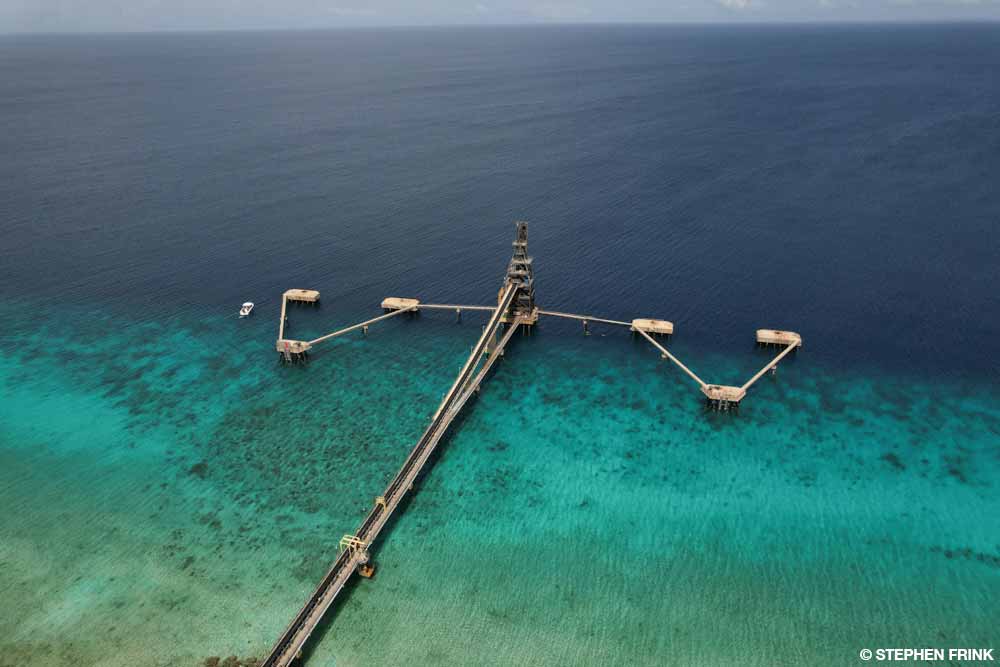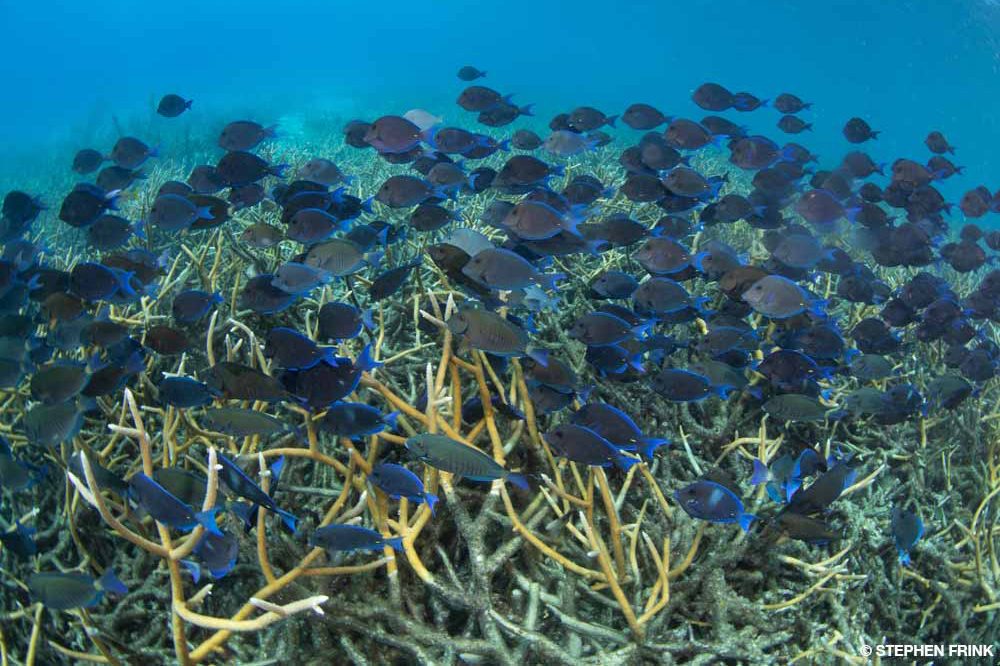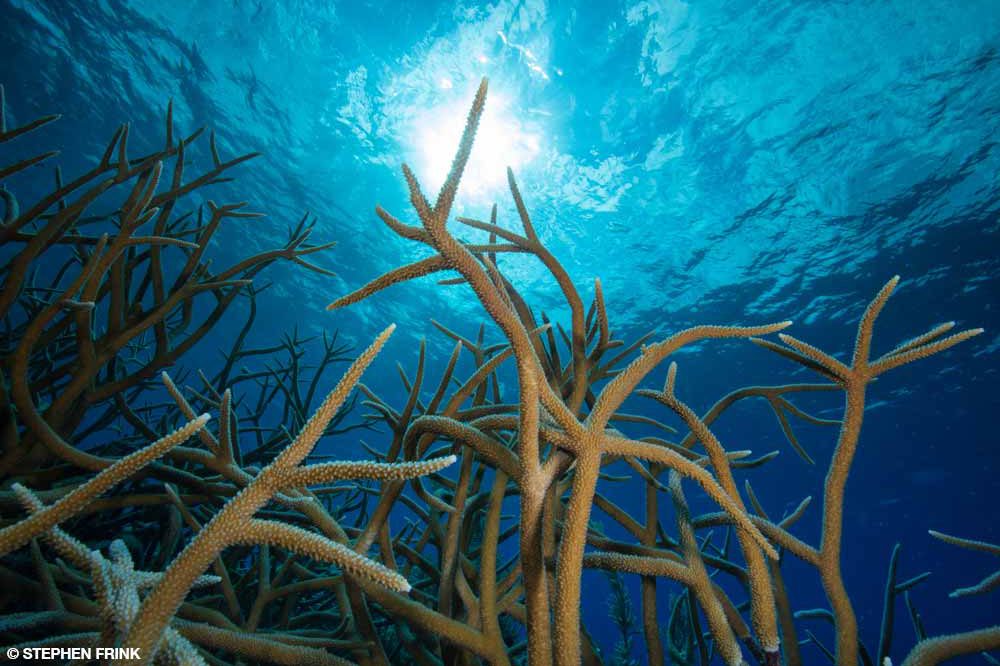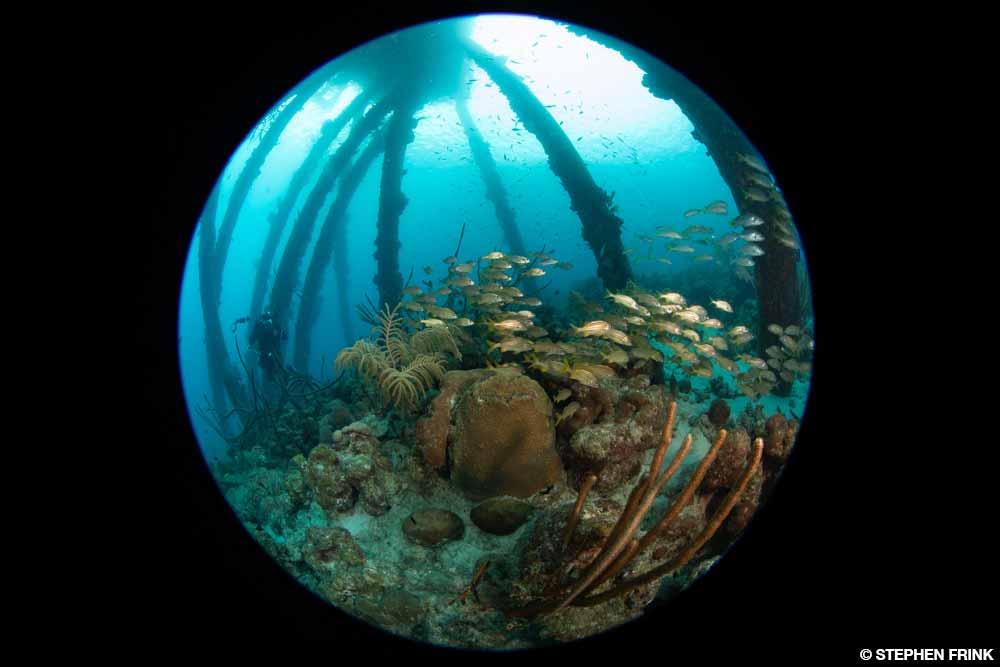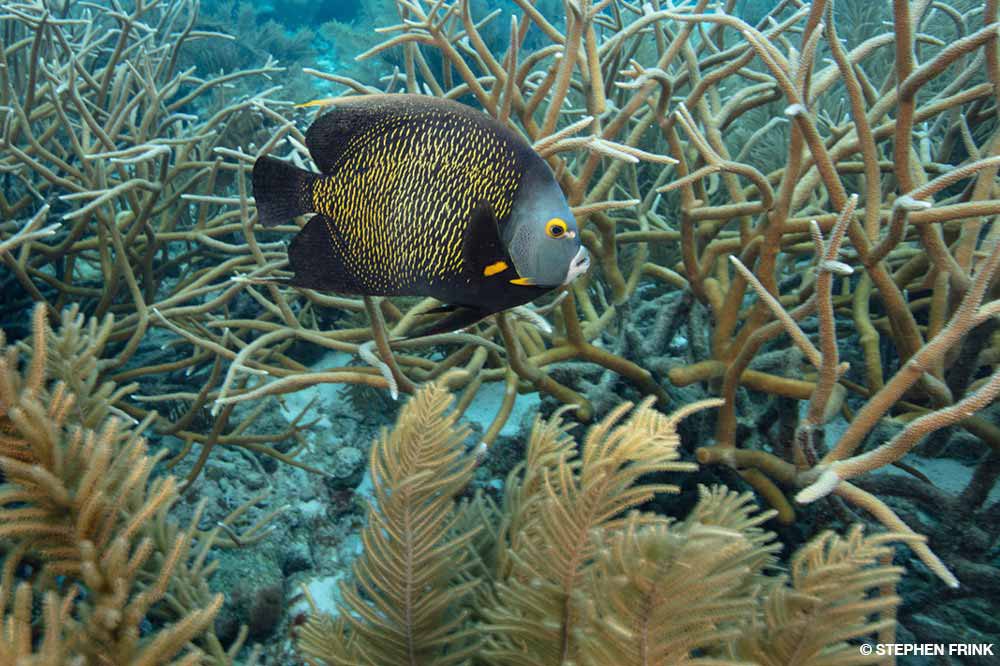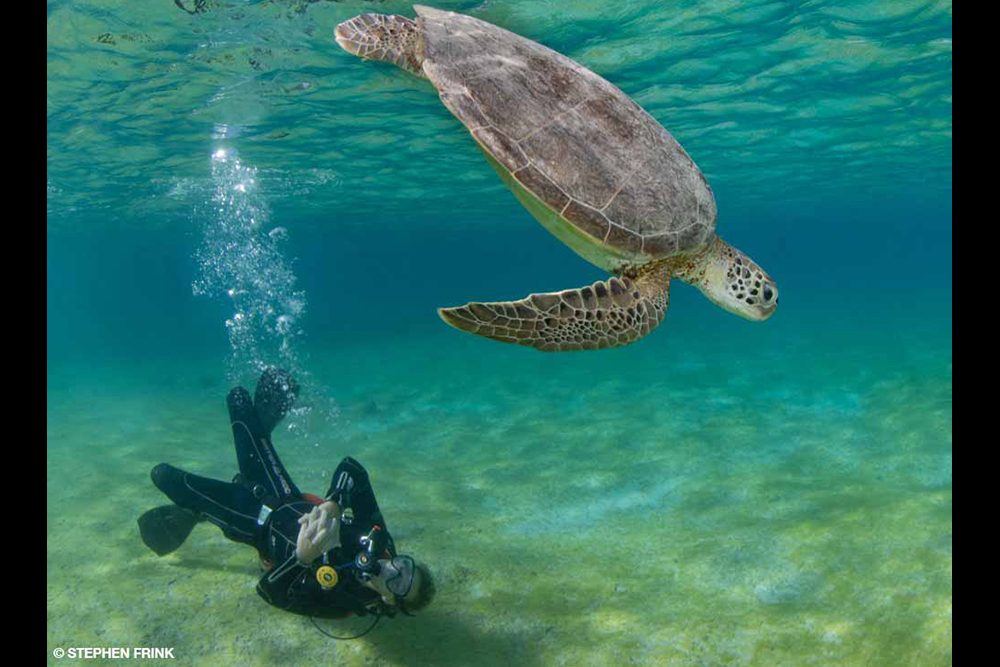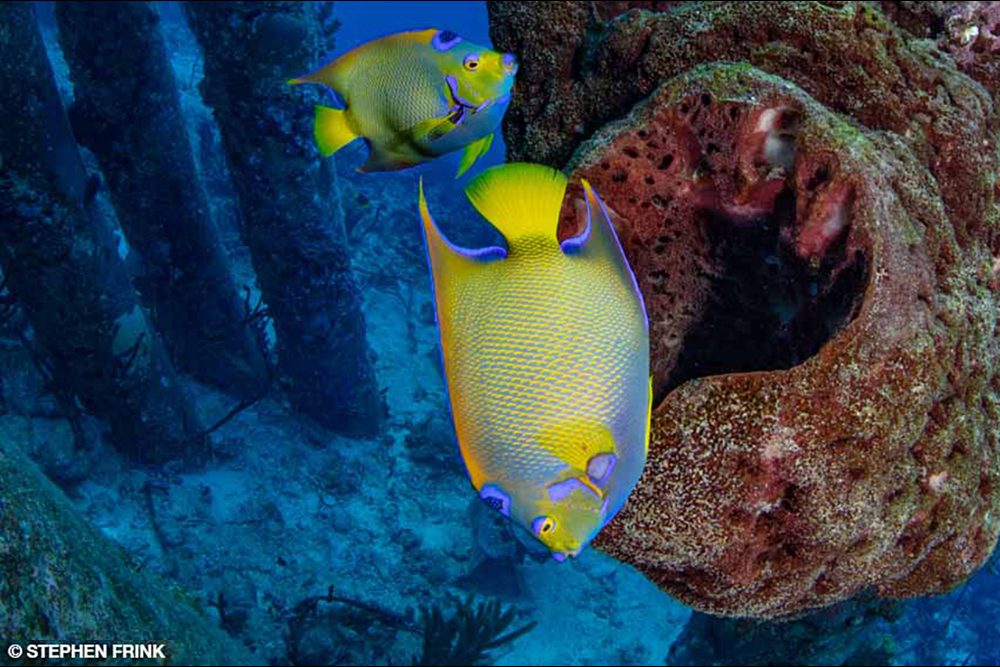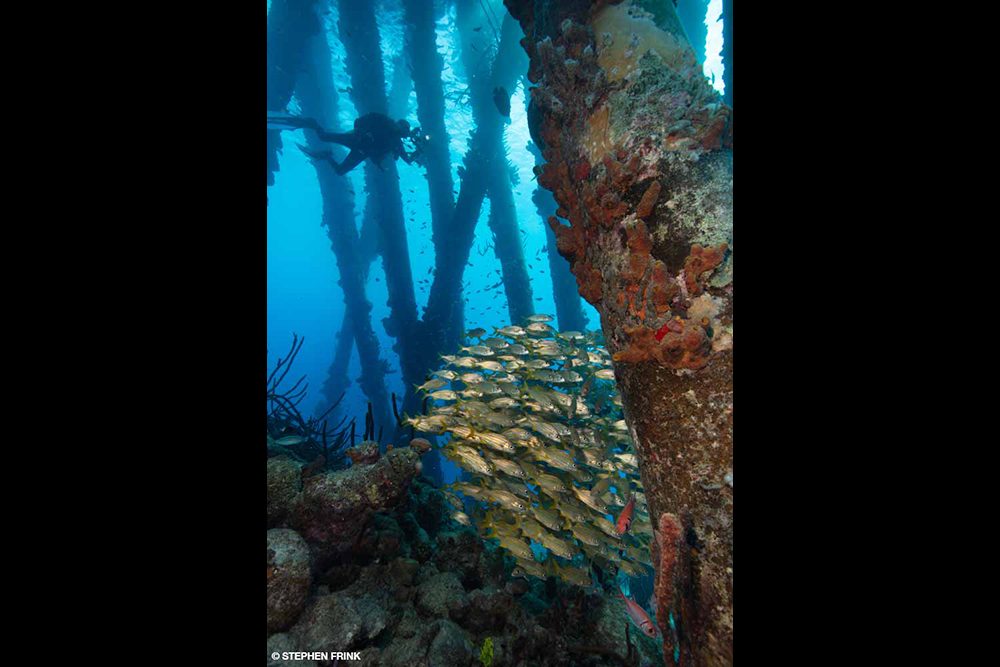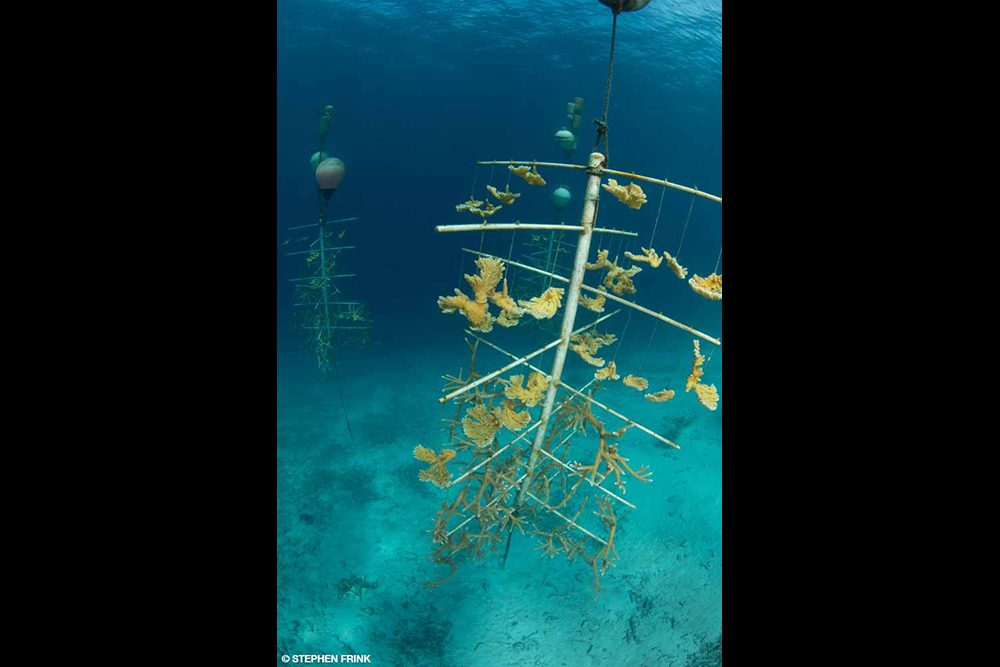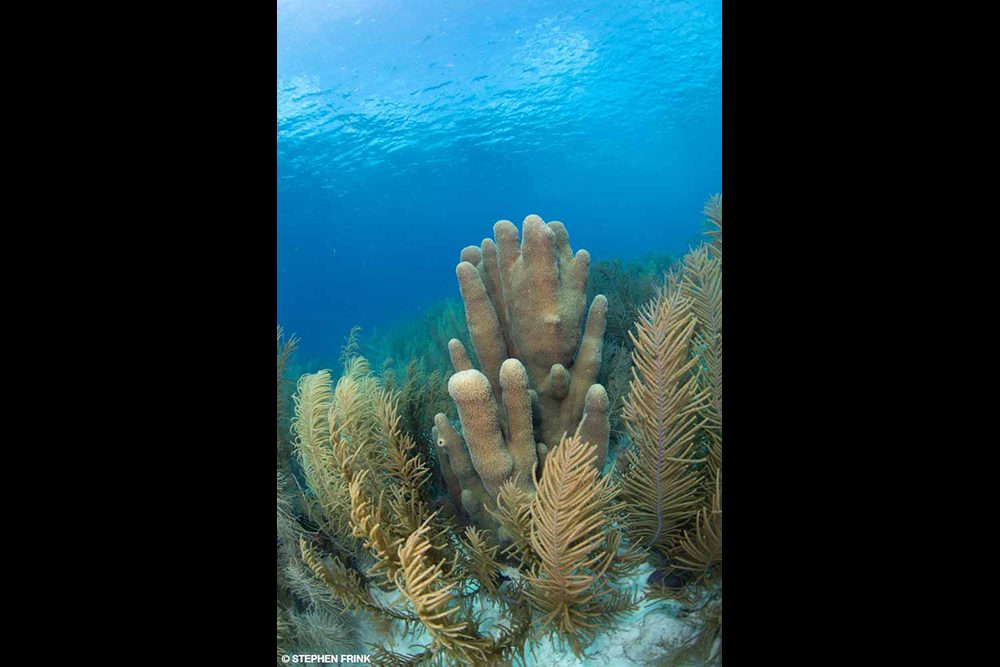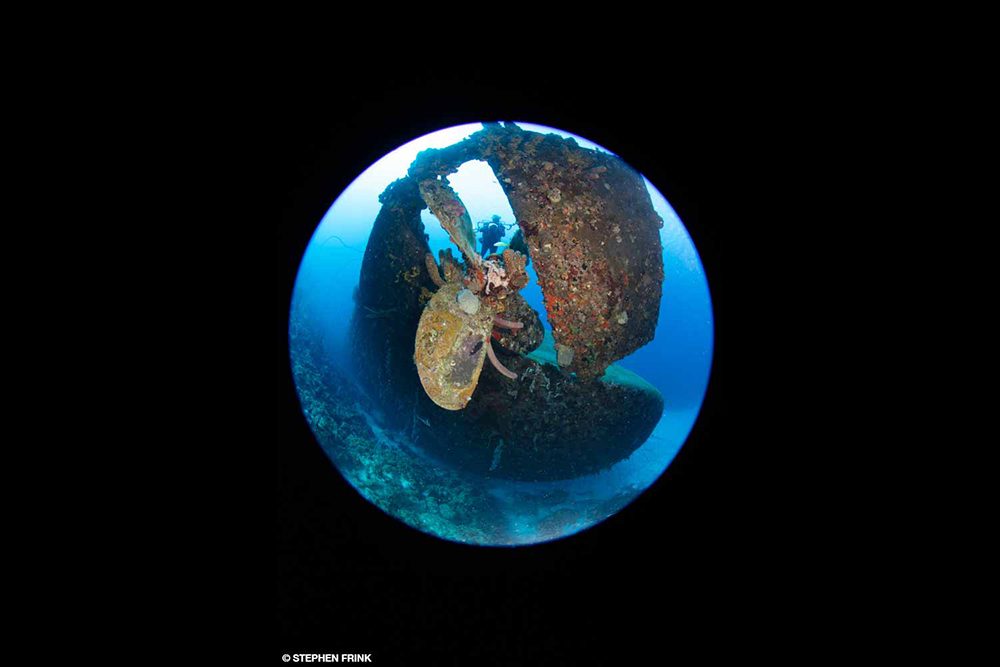DESCENDING THE LIMESTONE STAIRS OF BONAIRE’S famous 1,000 Steps dive site in full scuba gear is challenging. It’s just 64 steps down, but it feels like many more — thus its name. Once you make it down, however, you’re rewarded with a relatively easy entry to a Caribbean reef teeming with life — billowing, undulating clouds of shimmering fish, curious and kind-eyed green turtles, bobbing orange seahorses, and more. Located on Bonaire’s western coast, 1,000 Steps is just one of dozens of shore dives that prove why the country is considered one of the best shore-diving destinations in the world.

CARIBBEAN REEF
SUCCESS STORY
Bonaire’s economy is mainly dependent on coral reef tourism, which can be tenuous. Studies continually show coral reefs trending toward extinction, with about 14 percent of the world’s coral lost in the past decade. Bonaire, however, is making huge strides forward in coral restoration. In a 2021 report on worldwide coral status, the Global Coral Reef Monitoring Network named the Bonaire National Marine Park (BNMP) one of three successful coral rehabilitation case studies.
Bonaire has been a pioneer in coral conservation. In 1979 it was one of the first places to establish a marine protected area (MPA), and BNMP is one of the oldest and most successful marine reserves. The park encompasses the reef that surrounds the entire island of Bonaire from the high-tide watermark down to 200 feet in depth. As a model, BNMP demonstrates that sustained local action and transparent governance can effectively increase coral reef resilience.
Also unique is that Bonaire’s nature parks are managed and maintained almost entirely with funding and support from its visitors. Most income is from a $45 nature entrance fee that divers pay. A self-policing system required divers to display a plastic souvenir tag until the process went electronic with a digital tag on your phone.
The fact that coral can be restored much quicker than it grows in the wild gives the world much-needed hope. If the conditions are conducive to growth — clean water, an optimal temperature of 73°F to 84°F, and minimal threats from overfishing, pollution, and coral harvesting — coral can mature in far less time than without restoration efforts.
Reef Renewal Foundation Bonaire (RRFB), a nonprofit organization partially financed by local dive operators collecting diver entrance fees, is leading efforts to protect and restore coral reefs in Bonaire. Eight RRFB nurseries have grown more than 15,000 endangered staghorn and elkhorn corals, and the organization has outplanted more than 34,000 corals back to Bonaire’s reefs. Biennial monitoring has shown since 2015 an increase in coral cover and density of juvenile corals and a decrease in macroalgal cover, which inhibits coral growth.
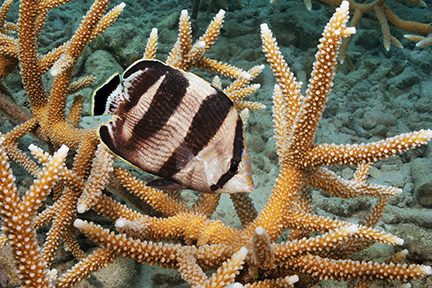
BONAIRE’S CORAL ISSUES
“Coral reef degradation is an extremely complex problem that involves multiple actors and stressors globally and locally,” said Francesca Virdis, RRFB’s chief operating officer. “There isn’t one solution. It’s a problem we must tackle on several different levels.” Local issues include water quality and runoff, population increase, and tourism growth.
The annual number of tourists increased from 80,000 in 2012 to 157,000 in 2019. Increasingly dependent on a tourism economy, Bonaire faces a significant challenge in regulating recreation and urban development. Additionally, Bonaire is a highly sought-after cruise destination, with cruise ship passengers increasing from 40,000 in 2005 to 458,000 in 2019. Cruise visitors typically don’t contribute enough to the economy to offset the damage to the coral reef from docked ships and overuse of the sewer system.
“It sounds silly, but another major issue is Bonaire’s goats, which reproduce quickly,” Virdis said. “They eat vegetation at a high rate, destabilizing the substrate, so everything gets washed into the water after heavy rains. The goats are not an easy stressor to tackle because you can’t just go around and shoot all the goats.”

GOVERNMENT INITIATIVES
STINAPA works hand in hand with the Bonaire government to tackle the issue of increased tourism by managing the coral reefs through regulation and outreach initiatives. The Bonaire government makes the policies, and STINAPA executes the BNMP’s management and supervision.
“We’re a Dutch Caribbean island,” Virdis said. “When we talk about government, there are two levels. The local government offers us the necessary permits, and financially we’ve received grants from the Dutch government. Ten years ago, many people were skeptical about coral restoration, believing that it was destructive and taking away from the preservation of reefs. The government has been open to understanding the importance of investing in restoration and conservation.”
Notably, in 1978 and 1980 the BNMP developed a permanent mooring system to stop boats from dropping anchors. In 2015 a wastewater treatment plant installed near the coast began to treat water from large hotels and businesses. Furthermore, legislation in 2017 required septic tanks to be installed a minimum of 1,640 feet from the ocean to lessen sewage runoff and increase water quality.

HOW THE DIVE INDUSTRY IS INVOLVED
The dive industry supports government initiatives by collecting nature conservation fees, nurturing coral in nurseries, and hand planting more than 20,000 staghorn corals. They also act as the conduit to coral education for visitors and residents. Dive operators organize coral restoration events, give presentations, and train volunteer divers by teaching basic reef restoration techniques. After the training, divers can actively volunteer in reef restoration on the island. Through these activities, dive shops transform educational opportunities into community involvement.

BONAIRE’S PIONEERING EFFORTS
One quality problem that Bonaire’s coral nurseries have encountered is an excess of coral. “One of the main bottlenecks is outplanting, which is time-consuming and requires a skilled diver,” Virdis said. “We developed a unique technique called wedging that works specifically in the calm waters of Bonaire, which has an abundance of staghorn corals growing in large thickets on the sand. Since this coral is not attached to a hard bottom and instead branches out to fuse with surrounding coral, we can wedge pieces of coral between other coral instead of manually cementing each piece to the reef. This method allows one diver to wedge outplant 200 large coral colonies on a dive versus outplanting only 15 to 20 pieces of coral.”
Bonaire continues its optimization efforts by focusing on species diversity, creating more resilient coral that can better withstand environmental changes. “In 2022 RRFB received a grant from the International Union for Conservation of Nature, which allowed us to scale up our coral larval propagation efforts,” Virdis said. “With larval propagation, we collect reproductive cells and fertilize them in the lab. Next, we rear the coral larvae in ocean pools before helping them to settle on the reef. This technique allows us to diversify our efforts.”
LOCAL COMMUNITY INVOLVEMENT
“Coral restoration and conservation is a multifaceted effort, and the local community is integral to the efforts,” Virdis said. In addition to their work with dive operators, RRBF, STINAPA, and the government invest time in outreach. They give presentations at schools, operate STINAPA’s Bonaire Junior Ranger Program, and educate locals on the importance of creating gated areas for their goats, which they previously let roam free.
In a world of dying coral, Bonaire is a much-needed beacon of hope. The government, RRFB, and STINAPA continue innovating and discovering new solutions for their precious reefs. They primarily focus on teaching the next generation of citizen scientists how to preserve the ocean.
“Nothing feels more accomplished than looking at your nursery tree completely cleaned and filled,” said Mackenzie, an RRFB volunteer in an interview on the organization’s website, “not a hole or fire coral polyp in sight.”
Jelajahi Lebih Lanjut
Learn more about Bonaire’s coral reefs and restoration efforts in this video, and see more examples of Bonaire’s corals in an online photo gallery.
© Penyelam Siaga — Q2 2022

